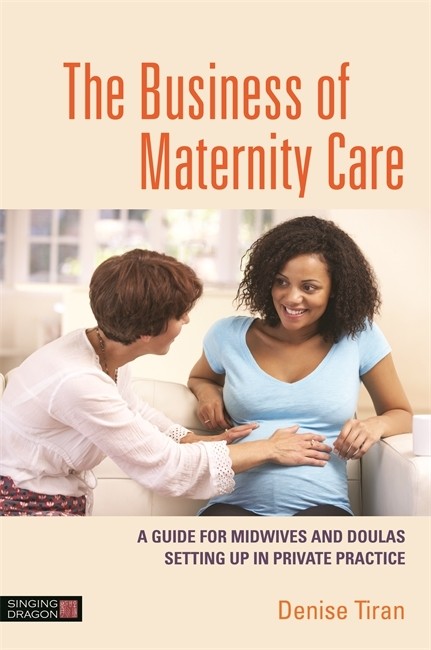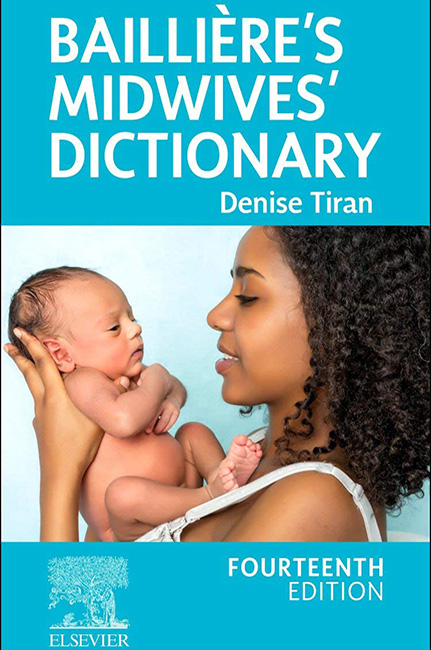Denise and her blog
Safe Storage Of Essential Oils In Midwifery Units
 Yet again, the thorny question of storage of essential oils in NHS settings has raised it head. When I teach our aromatherapy courses for NHS midwives, I am often challenged by managers and even pharmacists on my guidelines for storage of oils. I’m sorry to say that this arises from lack of knowledge and understanding of how aromatherapy oils work and how the principles of use must be applied to their use within the institutional settings of maternity units and birth centres, and within the parameters of midwifery practice.
Yet again, the thorny question of storage of essential oils in NHS settings has raised it head. When I teach our aromatherapy courses for NHS midwives, I am often challenged by managers and even pharmacists on my guidelines for storage of oils. I’m sorry to say that this arises from lack of knowledge and understanding of how aromatherapy oils work and how the principles of use must be applied to their use within the institutional settings of maternity units and birth centres, and within the parameters of midwifery practice.
In my courses, I teach that unopened bottles of essential oils should be stored in a locked cool, dark cupboard. More importantly, all opened bottles (when the seal has been broken) should be stored in a locked refrigerator, separate from the drugs ‘fridge.
The need to store opened bottles of essential oils in a fridge is a requirement of the aromatherapy organisations and is related to more rapid deterioration of chemicals within the oils when stored in a warm place. Previously, it was thought that only citrus oils such as grapefruit, orange, mandarni etc, should be kept in the fridge as they are known to deteriorate more quickly than most other oils. Deteriorated oils oxidise and chemicals originally in the oils change into other chemicals which can cause toxicities and effects such as allergic reactions.
The use of essential oils in the NHS MUST be along the same principles of Medicines Management, event though they are not eligible for inclusion in the BNF. They should be treated as drugs both in terms of administration and storage. This requires all medicines to be stored safely ie locked away. Midwives administering oils are also bound by the NMC Code in respect of having adequate knowledge, understanding and practice principles when using aromatherapy.
The storage of all chemicals in insitutional settings such as the NHS is regulated under COSHH 2002. COSHH requires all staff to take steps to minimise risks associated with chemicals in the workplace, whether cleaning products, medicines or other substances and includes “vapours” such as essential oils.
The issue of the refrigerator being separate from the drugs fridge is my regulation for added safety in light of the scrutiny of midwifery aromatherapy by CQC and Ockenden review teams. There is no evidence that storing the oils in the drugs fridge does affect the drugs, but neither is there any eviidence that they do not. If ever there was a court case involving aormatherapy use, it would be imposssible to state categorically that the oils did not have an effect on the drugs. Essential oil bottles, even when firmly closed, emit aromas (ie chemicals) once the seal has been broken, so this rule is sensible additional secruity to protect women receiving the oils, women requiring drugs if they have been stored alongside essential oils, other women and other staff who may be exposed to aromatherapy vapours within the unit AND the midwives using either oils OR medicines that have been stored with them.
So, in summary, storing oils in a locked refrigerator, separate from a drugs fridge, is based on the application of knowledge and understanding to midwifery (and pharmaceutical) practice including:
- chemistry of oils and aromas
- medicines management principles
- COSHH regulations
- NMC Code for midwives using aromatherapy oils and those who administer drugs
- ethics – understanding all of the above suggests that midwives must take steps to use aromatherapy and essential oils as cautiously as possible
What Is A Midwife?
 It is interesting to see the increasing number of midwives leaving the NHS (even though the fact doesn't seem to free up posts for those who want to stay - but that's a discussion for another day). Midwifery attrition has turned from a trickle to a deluge which seems unstoppable.
It is interesting to see the increasing number of midwives leaving the NHS (even though the fact doesn't seem to free up posts for those who want to stay - but that's a discussion for another day). Midwifery attrition has turned from a trickle to a deluge which seems unstoppable.
Some who leave are making conscious decisions to move on with their careers or have personal or family issues which dictate a move. Many more appear simply to be deserting the sinking ship of the NHS, with hopes of finding something better elsewhere.
There is a trend for these midwives to consider how else they could use their midwifery degrees and experiences. However, this may be done more with a sense of desperation than with any real forethought or understanding that moving from midwifery may entail further training.
The role of the midwife encompasses direct clinical care, research and education. Clinical care ranges from the preconception period to one year after birth. Whilst there are many commonalities and shared skills with other professions, a midwifery qualification does not automatically enable you to move into other professions without further training. I frequently see questions on social media from midwives considering leaving midwifery about whether they can get a job in health visiting or school nursing. Health visiting is a separate profession, albeit strongly linked with midwifery, School nursing is a specialism within the nursing profession, not midwifery. Even other aspects of midwifery such as abortion care, becoming a research midwife or moving into pre- and post-registration midwifery education require further learning and acquisition of new skills.
I remember during my PGCEA course in preparation for teaching, we had to debate whether midwifery was a profession. In the 1980s we still valued midwifery as a profession with its own body of knowledge and specific skills not shared with other professions or jobs. Unfortunately, we seem to have lost respect for midwifery as a profession - and to many, it IS just a job. The erosion of midwifery, aspects of which are increasingly being taken over by obstetricians or maternity support workers, seems to be leading to an inevitable demise of the profession, despite being one of the oldest in the world.
Induction of labour is the hot topic in maternity care right now.
Rates are sky-high, and with them comes the cascade of intervention we’re all working so hard to avoid.
That’s exactly why I wrote my latest book:
Complementary Therapies for Post-Dates Pregnancy (published late 2023).
It’s written for professionals, but there’s plenty in there for expectant parents too - especially those hoping to avoid medical induction.
When researching the book, I found over 100 traditional methods from around the world for starting labour. Some were evidence-based, like reflexology or acupuncture. Others… less so. (Let’s just say, I won’t be recommending baboon urine or elephant dung - though I did come across them!)
The point is: there’s a huge appetite for natural ways to get labour started. But not every method is safe or appropriate for every person. Often, less is more - and timing, context, and caution matter deeply.
Whether you’re a midwife, doula, or educator, this book is designed to give you evidence-based, balanced guidance on working with physiology - not overriding it.
Women’s Bodies Are Designed To Give Birth
That’s the one truth I wish every student midwife carried with them from day one.
Too often, student midwives enter a system where physiological birth is rarely seen - where intervention is the norm, not the exception. And without even realising it, they’re enculturated into a model that assumes the body needs rescuing.
But what if midwifery education started from a different place?
From a foundational belief that the pregnant body is not broken. That birth doesn’t need to be managed, but supported. That we are there to work with physiology, not override it.
If we grounded our teaching in that truth, we’d raise a generation of midwives who trust the body - and know how to hold space for it to do what it was made to do.
Midwives: did you see physiological birth as a student? How did it shape the way you practise now?
A few words about lavender essential oil
If I had to pick just one essential oil to take to a desert island... it might have to be lavender.
Common lavender – lavandula angustifolia – is a midwife’s best friend. It's deeply relaxing, great for pain relief, and even has antimicrobial properties. I’ve found it incredibly helpful in both pregnancy and labour.
BUT not all lavender oils are created equal! Some types contain chemical compounds that aren’t safe for pregnancy, so it’s really important we stick to common lavender – the safest and most appropriate for use during pregnancy, birth, and beyond.
This kind of detail is exactly why I love what we do at Expectancy. It’s about blending knowledge with safety, and giving us the confidence to use complementary therapies in practice.
Mastering the Business of midwifery
Using Natural Remedies Safely in Pregnancy and Childbirth
 Herbs, Homeopathy & Rescue Remedy - are the women you care for asking about natural remedies?
Herbs, Homeopathy & Rescue Remedy - are the women you care for asking about natural remedies?
I’ve always had a strong interest in natural approaches to pregnancy, birth, and the early postnatal period.
I’m not alone - up to 80–90% of expectant parents in some areas turn to herbal remedies, especially things like raspberry leaf tea for birth prep or ginger for nausea.
However not everything natural is safe. For example, St John’s Wort can interact dangerously with prescribed antidepressants and shouldn’t be used in pregnancy.
That’s why I wrote this book - a kind of A–Z guide to natural remedies. It covers:
✅ Herbal remedies
✅ Homeopathy
✅ Bach flower remedies (yes, including Rescue Remedy)
✅ Traditional approaches from around the world.
It’s a quick reference tool for midwives, birth workers, or anyone who wants to give balanced, evidence-informed advice to the women they support.
Because when they ask - we need to know.
Previous articles
Safe Storage Of Essential Oils In Midwifery Units
What Is A Midwife?
Induction of labour is the hot topic in maternity care right now.
Women’s Bodies Are Designed To Give Birth
A few words about lavender essential oil
Mastering the Business of midwifery
Using Natural Remedies Safely in Pregnancy and Childbirth
Impact Of Aromatherapy Oils On Midwives
Nausea in Pregnancy
Feedback





